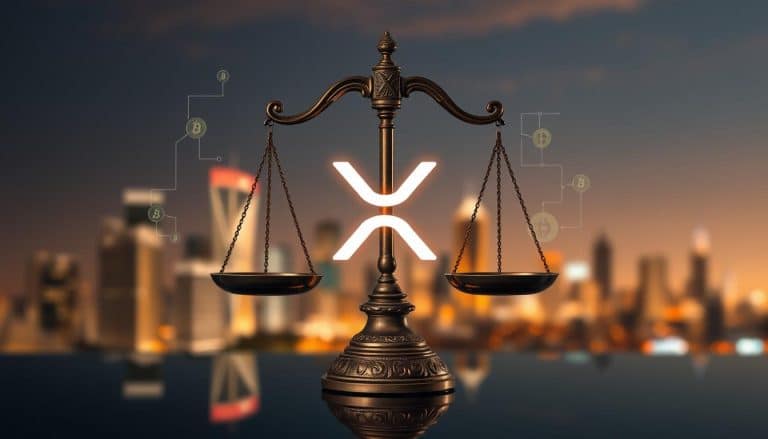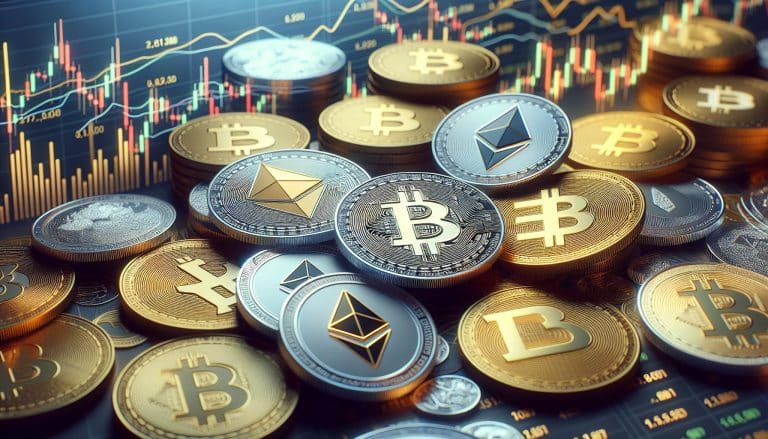Xrp Blockchain Innovation
Ripple is a distributed financial technology that provides a real-time gross settlement system, currency exchange and remittance network. Ripple’s XRP blockchain technology offers innovative solutions to the payments industry by allowing transactions to be executed in seconds with minimal cost. It is the first digital currency designed for enterprise use, enabling businesses and institutions to transfer money across borders quickly and securely. The XRP ledger utilizes consensus algorithms to validate transactions, making it highly secure from malicious attacks or fraud. Furthermore, its distribution model facilitates liquidity between different currencies and markets, while its integration into RippleNet enables efficient international payments. This article will explore the advantages of XRP blockchain technology, what makes it unique compared to other cryptocurrencies, its benefits for both financial institutions and consumers as well as any challenges associated with adopting it.
Overview of Ripple’s XRP Blockchain Technology
Ripple’s XRP blockchain technology is a revolutionary force, shaking up the banking industry with its lightning-fast transactions and minimal fees – like a pebble in a pond, creating ripples of change. This technology offers enhanced settlement speeds compared to traditional banking systems, making it an attractive option for financial institutions. Moreover, its transaction costs are significantly lower than conventional payment methods due to the absence of third-party intermediaries. These two features make Ripple’s XRP blockchain technology an attractive choice for banks looking to reduce costs while speeding up their operations. With this in mind, let us examine the advantages of XRP’s blockchain technology further.
Advantages of XRP’s Blockchain Technology
Utilizing a distributed ledger system, XRP has the potential to provide numerous advantages in comparison to traditional payment networks. Firstly, its decentralized structure ensures more secure data storage than centralized systems, making it almost impossible for external actors to tamper with the data stored on the blockchain. Secondly, XRP’s consensus mechanism allows transactions to be processed extremely quickly – sometimes within seconds – as compared to other payment networks which can take up to several days. Finally, XRP offers significantly lower transaction fees than most other payment networks, making it an attractive option for merchants and consumers alike. These three advantages make XRP an ideal choice for users looking for increased security and speed when making payments. As such, Ripple’s XRP Blockchain technology is positioned to revolutionize how people transfer money across borders and currencies in a cost-effective manner. By transitioning away from slow and expensive traditional payment methods and towards faster digital solutions like XRP, individuals and organizations will be able to enjoy greater efficiency when sending money around the world.
What is XRP?
XRP is a cryptocurrency created by Ripple Labs to facilitate faster and cheaper transactions across borders and currencies. It is the third digital currency in terms of market capitalization, behind Bitcoin and Ethereum. Its blockchain technology uses a distributed consensus ledger system that makes it possible for financial institutions to make real-time payments anywhere in the world. The security of XRP’s blockchain has been tested against various malicious attacks, however, there are still potential security risks associated with its use of an open-source codebase. Additionally, scalability issues have been identified as a limitation for XRP’s growth; as the number of users on its network increases, transaction processing speeds may slow down significantly. Despite these challenges, XRP’s underlying protocol continues to be developed with new features that offer more efficient payment solutions than traditional payment systems. As such, XRP has become an attractive choice for financial institutions looking to reduce costs while increasing speed and reliability in cross-border payments. With this in mind, it is clear that XRP has the potential to revolutionize global finance through its innovative blockchain technology. To understand how this works in practice however requires understanding XRP’s distribution model which will be discussed next.
XRP’s Distribution Model
The distribution model of XRP is based on a decentralized network that allows for rapid and low-cost transactions across borders. It is based on a distributed ledger system, which allows users to transfer money in a secure, efficient manner without relying on any central authority or third-party verification. This model has been met with both praise and criticism in the decentralization debate. The following points emphasize some of the advantages of this approach:
- Transactions are much faster than traditional banking systems as they are settled within seconds
- Low transaction fees compared to other payment systems
- No need for intermediaries such as banks or clearing houses
- All transactions are completely transparent and verifiable by all participants
- Ability to process large volumes of transactions at once.
The XRP blockchain also provides users with access to RippleNet, an open-source payments network that connects banks, payment providers, digital asset exchanges, and corporates around the world. By leveraging RippleNet’s advanced infrastructure, companies can send money anywhere instantly, reliably and cost effectively. With RippleNet’s global reach and scalability, businesses have an opportunity to radically reduce their costs while offering customers more efficient services than ever before. Moving forward into the next section about RippleNet will provide further insight into how it works and its potential applications.
RippleNet
RippleNet is a payments network that facilitates faster, reliable, and cost-effective cross-border transactions for banks, payment providers, digital asset exchanges, and corporates. RippleNet employs a distributed ledger technology known as the XRP Ledger in order to facilitate real-time settlement of payments with scalability. It also enables multi-hop clearing and provides access to multiple currencies across networks through Interledger integration. This allows greater flexibility for businesses by allowing them to settle payments on different ledgers quickly while avoiding costly liquidity issues associated with international payments.
RippleNet’s architecture allows for the secure transfer of funds between two parties without any intermediaries involved, resulting in improved performance and increased efficiency compared to traditional methods. Additionally, its features enable users to make low-cost international transfers that are transparent and traceable at all times. The combination of these features offers a powerful solution for organizations looking for an alternative way to facilitate their global payments needs.
XRP Ledger
The RippleNet, which is a global payments network, uses the XRP Ledger as an integral component. The XRP ledger is an open-source decentralized blockchain that provides real-time gross settlement, remittance and currency exchange services. It enables users to trade in any type of asset on the ledger. Furthermore, it facilitates interoperability solutions and smart contracts on its platform for various different use cases. This allows for quick transactions with low fees, increased transparency and improved security compared to traditional financial systems. Additionally, the XRP Ledger offers scalability features such as transaction queuing that helps sustain high throughput during peak times while still maintaining a low latency rate. This makes XRP an attractive option for those looking to engage in cross-border payments or value exchanges with faster speed and lower costs than other blockchains offer. As such, it serves as a powerful tool for businesses seeking to leverage blockchain technology for their operations. Through its advanced features, the XRP Ledger provides businesses with greater flexibility when managing their finances while also promoting innovation in the space of digital assets and distributed ledgers. With these advantages in mind, it is no surprise that more companies are turning towards this technology to fulfill their needs. Having discussed the capabilities of XRP Ledger in detail, we now move onto Interledger Protocol (ILP) which enables real-time payment flows across multiple networks regardless of underlying currencies or technologies used by each network involved.
Interledger Protocol (ILP)
Interledger Protocol (ILP) is a protocol designed to facilitate real-time payment flows across multiple networks, regardless of the underlying currencies or technologies used by each network. This means that ILP can be used for cross-currency and cross-blockchain transactions, allowing different blockchains to interact with one another. Smart contracts play an important role in ILP, as they provide a secure way of verifying payments between two parties without relying on third party intermediaries. Additionally, ILP offers interoperability solutions that enable transactions between disparate financial systems such as cryptocurrency exchanges and traditional banking services. As such, ILP has become an integral part of XRP blockchain innovation in terms of promoting global financial inclusion and expanding access to digital assets. With its ability to securely move value around the world quickly and efficiently, ILP could open up many new opportunities for users of the XRP ledger in the future. Ultimately, ILP’s potential extends beyond just XRP; it has the power to revolutionize global finance by connecting all blockchains together through its innovative technology. As such, XRP’s use cases are sure to benefit from ongoing improvements in Interledger Protocol technology.
XRP’s Use Cases
XRP has been identified as having a range of potential use cases, from enabling real-time settlement in cross-border payments to providing liquidity solutions for digital assets. One of the most notable advantages of XRP’s blockchain technology is its scalability, which makes it suitable for a wide variety of applications. However, there are also some privacy concerns associated with its use cases. These include the ability to trace transactions and lack of anonymity for users, which could be seen as a tradeoff for the platform’s scalability and reliability. As such, developers must consider these issues when integrating XRP into their systems. With that in mind, Ripple has formed partnerships with several organizations seeking to leverage XRP’s blockchain innovation for various purposes.
Ripple’s Partnerships
XRP’s use cases have been a driving force behind its innovation and adoption. Ripple, the company that created XRP, has had an active role in facilitating the success of the coin by pursuing strategic partnerships with numerous organizations. Ripple has implemented a two-pronged strategy to increase the adoption of XRP: firstly, it has partnered with banks and financial institutions to make transactions faster; secondly, it is working actively with payment companies and remittance firms to enable customers to send money abroad in a secure manner. These strategic collaborations are helping drive increased awareness and adoption of XRP on a global scale.
Ripple’s partnerships have led to substantial progress in terms of increasing the liquidity of XRP and making it available for use in more than 40 countries worldwide. As part of their strategy, Ripple also works closely with governments and regulators around the world to ensure compliance with existing regulations while enabling greater access to XRP services for customers everywhere. With such significant efforts being put into expanding its reach, ripple’s partnership networks can be seen as a major factor contributing towards XRP’s acceptance in both established markets as well as new ones. This will be invaluable when evaluating xrp’s market performance further down the line.
XRP’s Market Performance
Since its launch in 2012, XRP has experienced a roller coaster of market performance. After reaching an all-time high of $3.84 USD in January 2018, the price of XRP dropped drastically and currently stands at around $0.30 USD as of April 2020. This dramatic drop is likely due to a combination of factors, including the general market volatility that has plagued crypto assets since their inception, and uncertainty over Ripple’s ability to secure major partners for its xRapid product which uses XRP as a bridge currency. Additionally, lack of regulatory clarity on digital assets have added to the price fluctuations and market volatility that surrounds XRP’s performance. Despite these challenges, there are still many who view XRP as a promising asset with potential long-term value; however, until more regulatory certainty exists and Ripple continues to build out its partner network for xRapid, it remains difficult to predict exactly how this asset will perform in the future. In light of these uncertainties regarding both market volatility and regulatory challenges, investors should proceed with caution when considering investing in XRP.
Regulatory Challenges
The lack of regulatory clarity surrounding digital assets has been a major challenge for XRP’s market performance. The uncertainty created by this lack of regulation has a direct financial impact on investments in digital currency, as it makes potential investors apprehensive and creates an atmosphere of market uncertainty. Furthermore, the exact legal status of cryptocurrency remains undefined in many countries and without explicit regulations or laws to govern them, governments are unable to provide any protection to those using digital currencies. This further adds to the risk associated with investing in XRP and other cryptocurrencies.
The absence of clear rules regarding taxation also means that investors do not have sufficient information about how their income from such investments will be taxed. This can lead to situations where investors may unknowingly be subjecting themselves to large tax liabilities due to their investments, which could potentially reduce their profits or even cause them losses if they are unaware of the applicable taxes. Additionally, there is a higher chance for fraud as unregulated markets are more vulnerable to manipulation by malicious actors who might use illicit tactics such as pump-and-dump schemes or insider trading. All these factors make investing in XRP less attractive and add further volatility within the overall market. With all these concerns, it is clear that regulatory clarity is key for ensuring stability within the digital asset space and providing greater confidence among potential investors.
Benefits of XRP to Financial Institutions
Financial institutions can benefit from utilizing XRP as a medium of exchange due to its ability to provide faster and more cost-effective transactions. Transactions on the XRP ledger are settled in just four seconds, compared to traditional payment networks which can take several days. This reduced timeline for the settlement of payments is beneficial for financial institutions as it allows them to complete international transfers in a fraction of the time and with fewer costs. Additionally, since XRP doesn’t require intermediaries or third party verification, it eliminates security concerns that come with using external sources. This results in cost savings since financial institutions no longer need to pay fees associated with these services. Furthermore, because XRP is an open-source platform, it enables financial institutions to customize their own solutions according to their specific needs without worrying about technological compatibility issues or vendor lock-in. As such, XRP offers a number of advantages over traditional payment networks for financial institutions looking for cost-effective and secure transaction solutions. By leveraging these benefits, financial institutions can reduce risks and improve operations while simultaneously reducing operational costs significantly. The transition from traditional payment networks to those based on blockchain technology provides an opportunity for greater efficiency and performance gains that can benefit both consumers and businesses alike.
Benefits of XRP to Consumers
Consumers can reap the rewards of faster, more cost-effective transactions when utilizing XRP as a medium of exchange. On average, transactions on the XRP ledger are settled in just four seconds, 84% faster than traditional payment networks which can take several days to complete.
The security and scalability features offered by the XRP blockchain make it an attractive choice for consumers who are looking for a reliable and safe way to transfer money quickly and cost-effectively. The decentralization of the ledger provides users with secure access to their funds without relying on third-party institutions. Additionally, XRP is capable of supporting up to 1,500 transactions per second – far more than any other cryptocurrency network currently available – ensuring that users are able to send payments swiftly and securely without worrying about transaction fees or delays. These advantages demonstrate why many consumers are turning towards XRP as a viable option for money transfers. With these benefits in mind, it is no surprise that adopting XRP is becoming increasingly popular amongst consumers all over the world. Moving forward however, there will be challenges that must be addressed if mass adoption is to become a reality.
Challenges of Adopting XRP
The benefits of XRP to consumers have been examined in the previous subtopic. Despite these advantages, there are several challenges that impede the adoption of XRP. One of the primary problems is liquidity issues. While XRP is accepted by many merchants and financial institutions, it still has limited use when compared to other digital currencies such as Bitcoin and Ethereum. This makes it difficult for users to access sufficient amounts of XRP which can be exchanged for goods or services on a large scale.
Another challenge with adopting XRP is scalability concerns. As with other distributed ledger technologies, XRP suffers from slow transaction speeds and high fees due to its lack of scalability solutions. This limitation can make it difficult to facilitate larger transactions which could discourage potential users from using the platform. These obstacles must be addressed if XRP is to become a viable option in the future for consumers worldwide. With this in mind, looking ahead towards the future of XRP requires an understanding of how these challenges may be overcome through innovation and development efforts.
The Future of XRP
As a major player in the digital currency space, XRP has the potential to revolutionize the way people transact and exchange value. Ripple’s Xpring platform is leading the charge in developing innovative solutions leveraging XRP and its associated technologies for payments, using xRapid, xCurrent and xVia products. Each of these products have unique features that make it possible to move money faster, with fewer costs than traditional payment methods. The application of these products can be seen in areas such as international remittance, corporate payments and securities settlements.
The future of XRP looks very promising with the introduction of new decentralized applications (dApps) built on top of its blockchain technology. This could give users access to different services such as peer-to-peer transactions, cryptocurrency trading and even asset tokenization – all powered by XRP. With more use cases being developed every day, it is likely that more people will start to embrace this technology as an alternative form of payment or asset exchange. As adoption increases, so will the number of businesses using XRP as their preferred choice for secure payment processing; ultimately creating a better experience for everyone involved in this new economy.






 Bitcoin
Bitcoin  Ethereum
Ethereum  Tether
Tether  XRP
XRP  USDC
USDC  Wrapped SOL
Wrapped SOL  TRON
TRON  Lido Staked Ether
Lido Staked Ether  Dogecoin
Dogecoin  Figure Heloc
Figure Heloc  Cardano
Cardano  WhiteBIT Coin
WhiteBIT Coin  Bitcoin Cash
Bitcoin Cash  Wrapped stETH
Wrapped stETH  Wrapped Bitcoin
Wrapped Bitcoin  USDS
USDS  Wrapped eETH
Wrapped eETH  Binance Bridged USDT (BNB Smart Chain)
Binance Bridged USDT (BNB Smart Chain)  Chainlink
Chainlink  LEO Token
LEO Token  Zcash
Zcash  Monero
Monero  WETH
WETH  Stellar
Stellar  Coinbase Wrapped BTC
Coinbase Wrapped BTC  Ethena USDe
Ethena USDe  Hyperliquid
Hyperliquid  Litecoin
Litecoin  Canton
Canton  Avalanche
Avalanche  Sui
Sui  Hedera
Hedera  USDT0
USDT0  sUSDS
sUSDS  Dai
Dai  Shiba Inu
Shiba Inu  Toncoin
Toncoin  World Liberty Financial
World Liberty Financial  Uniswap
Uniswap  PayPal USD
PayPal USD  Cronos
Cronos  Ethena Staked USDe
Ethena Staked USDe  USD1
USD1  Mantle
Mantle  Polkadot
Polkadot  Rain
Rain  MemeCore
MemeCore  Bitget Token
Bitget Token